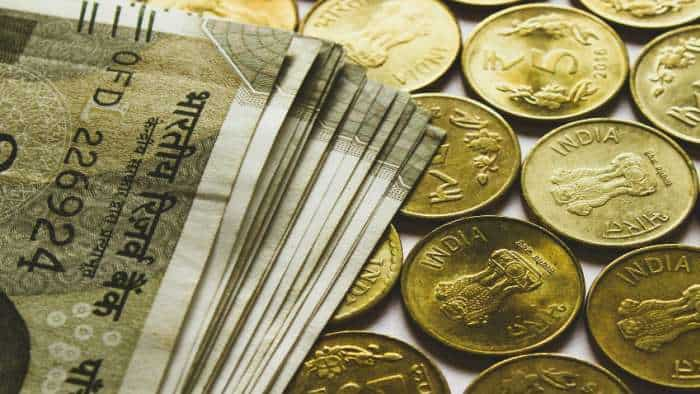Credit Card: Bank has shrunk your credit card limit. These can be the reasons
As stated by SEBI, banks hold the right to analyse the credit limits of customers based on their spending and repayment data and further offer to increase or decrease the credit limit, depending on the case.
)
Over the past several weeks, bank customers have been raising complaints about their credit card limits being suddenly decreased. While many SBI customers have shared their complaints against the bank for taking such a sudden action without any proper reasoning, it has come to the fore that SBI is not the only one to take this action as many other banks, including HDFC Bank and RBL Bank, have also done it in the past. As stated by SEBI registered tax and investment expert, Jitendra Solanki, banks hold the right to analyse the credit limits of customers based on their spending and repayment data and further offer to increase or decrease the credit limit, depending on the case.
However, there are several factors due to which banks have lowered your credit limit.
Reasons why banks reduce credit card limit
1. Default cases: As stated by the Reserve Bank of India, the number of credit card defaulters has risen significantly by 1.94% at the end of March 2023, while credit card outstanding has also risen to Rs 2.10 lakh crore in March 2023, in comparison to Rs 1.64 lakh crore in March 2022. Considering the rise in defaulters, the delay in credit card payments affects one's credit score and thus can prompt banks to reduce the credit limit.
2. Increasing delinquencies: In cases where banks observe credit card payment defaults for over three months or more, it raises serious concerns. According to a Transunion Cibil report, credit card payment defaults have increased in the quarter that ended in June 2023. Considering this, banks after observing an increase in delinquencies look forward to tightening their credit policies.
3. High utilisation ratio: Banks also observe the customer's credit utilisation ratio i.e., a proportion between the amount of available credit and the amount spent. For instance, a customer with a credit limit of Rs 1 lakh spends about 30-40% of it and is considered to be a prudent and responsible user. However, those with a high credit utilisation ratio of 70% and above become a matter of concern for banks and thus they can reduce the credit limit for such customers. This is usually because lenders consider customers with higher utilisation ratios as 'potentially riskier'.
4. Inactive cards: Customers who rarely use their credit cards can often witness their credit limit being reduced. Lenders generally earn when a customer uses a credit card. However, an inactive card seems of no benefit to them and thus they can reduce the credit limit and further increase the same for another active cardholder.
Get Latest Business News, Stock Market Updates and Videos; Check your tax outgo through Income Tax Calculator and save money through our Personal Finance coverage. Check Business Breaking News Live on Zee Business Twitter and Facebook. Subscribe on YouTube.
RECOMMENDED STORIES

Senior Citizen Latest FD Rates: Know what major banks like SBI, PNB, Canara Bank, HDFC Bank, ICICI Bank are providing on fixed deposits

Gratuity Calculator: Rs 38,000 as last-drawn basic salary, 5 years and 5 months of service; what will be gratuity amount?

Retirement Planning: In how many years your Rs 25K monthly SIP investment will grow to Rs 8.8 cr | See calculations

Top 5 Small Cap Mutual Funds with best SIP returns in 1 year: See how Rs 25,000 monthly investment has grown in each scheme

Top 7 SBI Mutual Funds With Best SIP Returns in 1 Year: Rs 25,000 monthly SIP investment in No.1 fund has jumped to Rs 3,58,404

Top 7 Mid Cap Mutual Funds With up to 41% SIP Returns in 5 Years: No 1 fund has converted Rs 15,000 monthly investment into Rs 23,84,990

SBI 5-Year FD vs MIS: Which can offer higher returns on a Rs 2,00,000 investment over 5 years? See calculations
10:28 AM IST










 Never do this one thing using your credit card, it will cost you a fortune; here's everything you need to know
Never do this one thing using your credit card, it will cost you a fortune; here's everything you need to know Rising demand for premium credit cards in India reflects economic growth
Rising demand for premium credit cards in India reflects economic growth ICICI Bank, MakeMyTrip launch co-branded credit card
ICICI Bank, MakeMyTrip launch co-branded credit card  Finance Ministry to introduce stricter monitoring of international & online credit cards transactions: Sources
Finance Ministry to introduce stricter monitoring of international & online credit cards transactions: Sources Indians credit card spending increases 19% (YoY) to Rs 1.7 trillion in July 24
Indians credit card spending increases 19% (YoY) to Rs 1.7 trillion in July 24